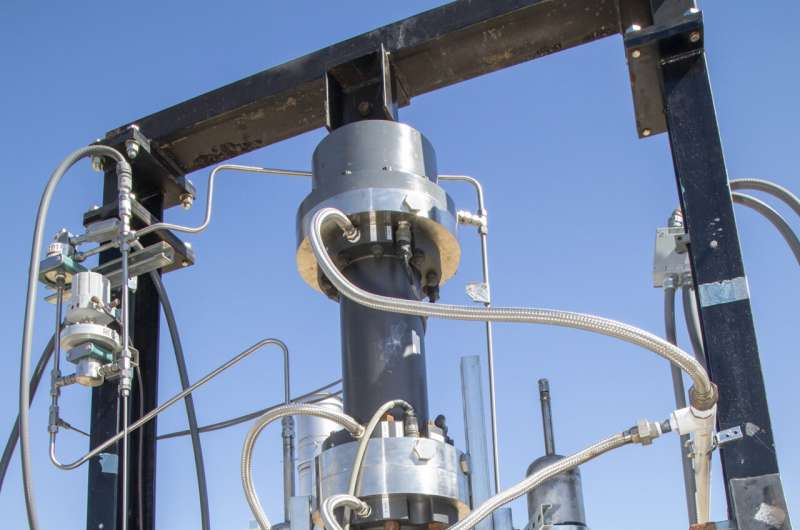This article has been reviewed according to Science X's editorial process and policies. Editors have highlighted the following attributes while ensuring the content's credibility:
fact-checked
trusted source
proofread
An innovative, efficient hydrogen compressor for FCEV refueling stations

A new hydrogen compressor developed at Southwest Research Institute (SwRI) can improve the efficiency and reliability of hydrogen compression used in the refueling of fuel cell electric vehicles (FCEVs). The SwRI-developed linear motor-driven reciprocating compressor (LMRC) is designed to compress hydrogen as a fuel source for FCEVs and other hydrogen-powered vehicles. Unlike most hydrogen compressors, SwRI's LMRC is hermetically sealed and has a linear motor design that increases its efficiency and reliability.
"The LMRC was built and designed to compress hydrogen for refueling vehicles with hydrogen fuel cells," said SwRI Principal Engineer Eugene Broerman, the project's lead investigator. "To refuel hydrogen vehicles, the gas must be compressed to high pressures first. So, we set out to design a more efficient, leak-proof compressor."
A key challenge for hydrogen compression is hydrogen's small particle size, which increases the potential for leaks as the gas flows through equipment.
"Because hydrogen particles are so small, there are inherent material compatibility issues when designing a compressor," Broerman said. "The particles are so small that they sneak in and alter materials and equipment performance. For instance, we had some early issues with the hydrogen particles causing magnets to fail, so we had to coat the magnets more effectively to prevent that."
The novel LMRC features an airtight compressor, hermetically sealed using a combination of SwRI-developed solutions. Coatings protect magnets from hydrogen incursion and embrittlement, while improved valve designs minimize leaks. It also utilizes a ceramic piston to minimize heat expansion and lower stress on its seal.
"Typical compressors have a piston and crank mechanism that requires them to make the same motion every time, with every revolution of the motor that's driving it. SwRI's LMRC is linearly actuated, so we can change the linear motion profile to optimize the compression process," Broerman said.
To avoid contaminants in the hydrogen gas, most hydrogen compressors require oil-free mechanisms. Unlike most reciprocating compressors, which have motors that move repeatedly in the same motion and require lubrication for maintenance, the LMRC's linear motor can move the piston in a user-defined motion pattern, is mounted for vertical motion and has a unique dynamic seal design.
As a result, the compressor's seals and bearings experience less friction, negating the need for traditional lubrication. It can also be used in a range of compression applications to avoid gas leaking into the atmosphere, such as hazardous gas or flare gas recovery applications.
Going forward, Broerman plans to modify different aspects of LMRC's design to increase efficiency and speeds to boost flow rates and to apply the LMRC to other compression applications requiring hermetic sealing.
"These types of projects are critical to advancing compression technology as the hydrogen economy continues to grow," Broerman said.
SwRI has a multidisciplinary team dedicated to hydrogen energy research initiatives to deploy decarbonization technologies across a broad spectrum of industries.



















